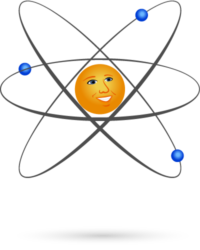Teacher Resources
Basics of Nuclear Science
The Berkeley National Laboratory has a good refresher on basic nuclear structure for teachers, and the Energy Information Administration offers Nuclear Explained, which provides a solid foundation on nuclear energy, power plants, and the fuel cycle.
The Nuclear Regulatory Commission provides background information on nuclear energy through its Science 101 program, featuring 12 well-explained topics.
Lesson Plans and More
The Office of Nuclear Energy has produced a great resource for teachers and students called The Harnessed Atom. Included are engaging lesson plans, powerpoint presentations, pre-and post-tests, hands-on experiments, interactive games, and classroom activities. Educators of grades 5 and up will definitely want to look at this.
The Nuclear Regulatory Commission has a collection of lesson plans that address the uses of radiation, nuclear energy generation, and radioactive waste. Hands-on activities include building a cloud chamber, using a Geiger counter, and viewing animated power plant models.
The Center for Nuclear Science and Technology Information provides detailed lesson plans focused on experiments and activities that allow students to explore atomic structure and behavior, fission, radiation, and chain reactions.
Making Sense of Nuclear Energy is a video for teachers from National Geographic, showing a class of 4th and 5th graders discussing nuclear energy.
From the University of Colorado, Powering Smallsburg is a classroom activity where students act as power engineers, deciding which kind of power plants to build for the community given budget constraints, power demands, power plant options, and environmental effects. Designed for 4th grade but can easily be adapted for other grades.
In this critical-thinking lesson plan for grades 5-7, students must decide whether or not nuclear power should replace fossil fuels as the energy source in a fictional community. The emphasis is on problem-solving, evaluating risks and benefits, and using credible sources.
The EPA's Radtown site for students also has lesson plans and interactive materials for educators on radiation science. Another source for information about this topic is Idaho State University's Radiation and Risk.
This comprehensive resource guide for teachers focuses on the Three Mile Island accident, with separate lessons for elementary and middle school students on energy, nuclear fission reaction, what happens in a nuclear reactor, the concern of overheating, and the resulting improvements in safety and oversight.
Videos
PBS has videos, background essays, and discussion guides on nuclear power and fission, with emphasis on evaluating energy sources for the future.
For upper elementary students, you may want to check out the pros and cons of nuclear power.
Peruse a collection of 23 videos for classroom use, some animated and some with onsite photos. These short (5 min. or less) videos cover various nuclear energy topics and are targeted to specific age groups, 4th grade and up.
